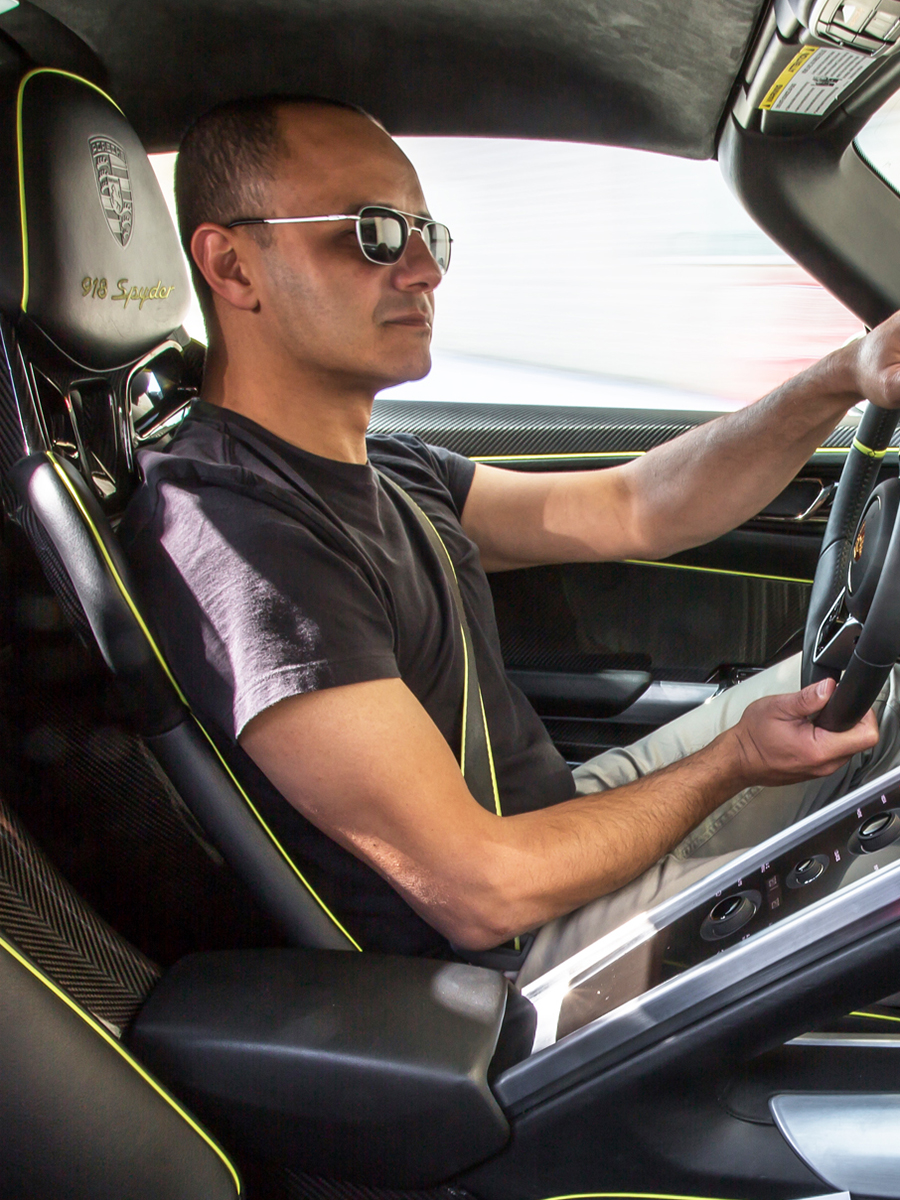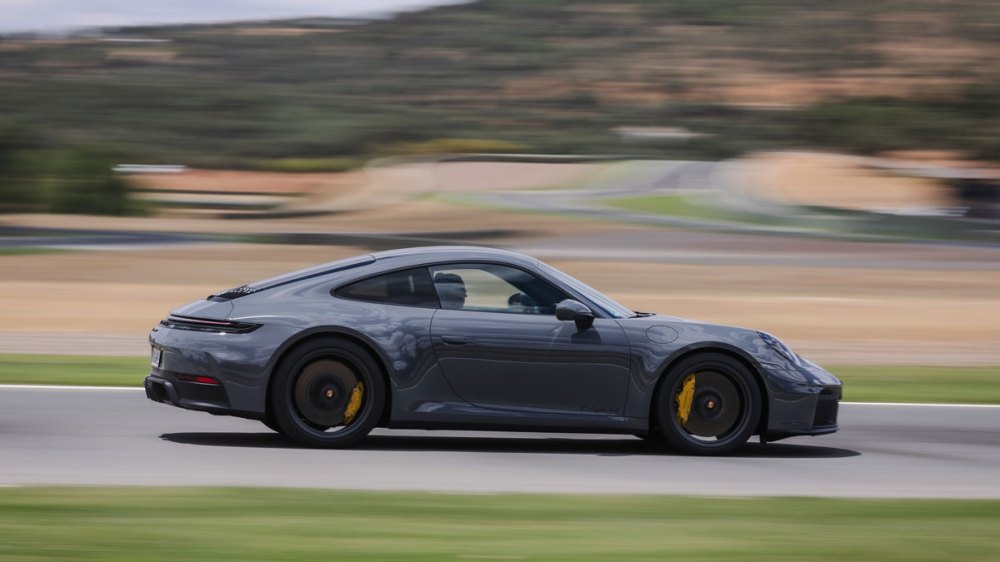
Porsche AG
The Porsche 911 has suffered countless deaths at the hands of pundits, enthusiasts, and peanut galleries, with each technological advance fueling the argument that the end is nigh for the German marque’s flagship sports car. And yet, the slant-tail model persists, despite the changes. This time, the demon is hybridization, which takes the form of the first rear-engined, battery-enhanced Porsche road car, the 2025 Porsche 911 GTS.
The fact that Porsche is a road car is telling, because 14 years ago Porsche also flirted with hybridization with the fearsome GT3 R Hybrid race car. The automaker’s other aggressive hybrids are no less compelling and include the 918 Spyder supercar and the 919 race car, sensational cars that remain benchmarks long after their debut.
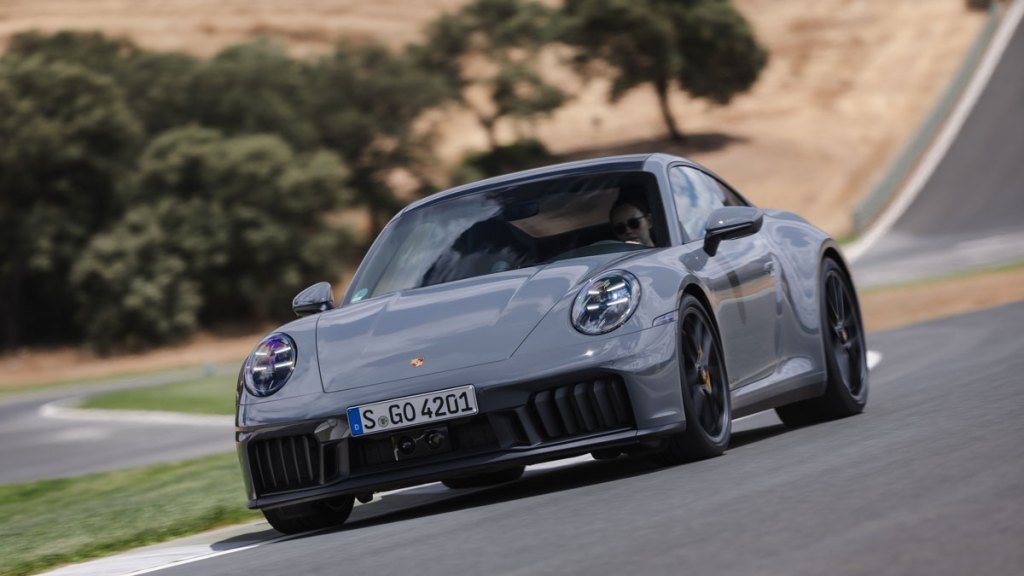
The Porsche 911 Carrera GTS hybrid.
Porsche AG
With the new GTS Hybrid, Porsche is flexing its muscles on the 911 fundamentals by resisting a plug-in hybrid setup, which would add significant pounds due to the format’s significant weight additions, such as a larger battery and a clutch to decouple the engine from the transmission. The plug-in setup works beautifully in Bentley’s new Continental GT Speed Hybrid, which leverages Porsche technology to bridge the brand’s gap toward full electrification. In this non-plug-in application, however, a tiny 1.9-kWh battery running on 400 volts replaces the accessory battery in the front trunk, which has been moved to the rear of the vehicle for balance.
For those who suspect the 911 GTS is all about efficiency, consider the overall equipment: its 3.6-liter turbocharged flat-six is larger than the base model’s, and with electric assistance, the octane/electron combination produces 532 hp, a 150 hp increase over the base Carrera. Torque is also impressive thanks to the electric motor, which peaks at 449 lb-ft between 2,000 and 5,000 rpm.
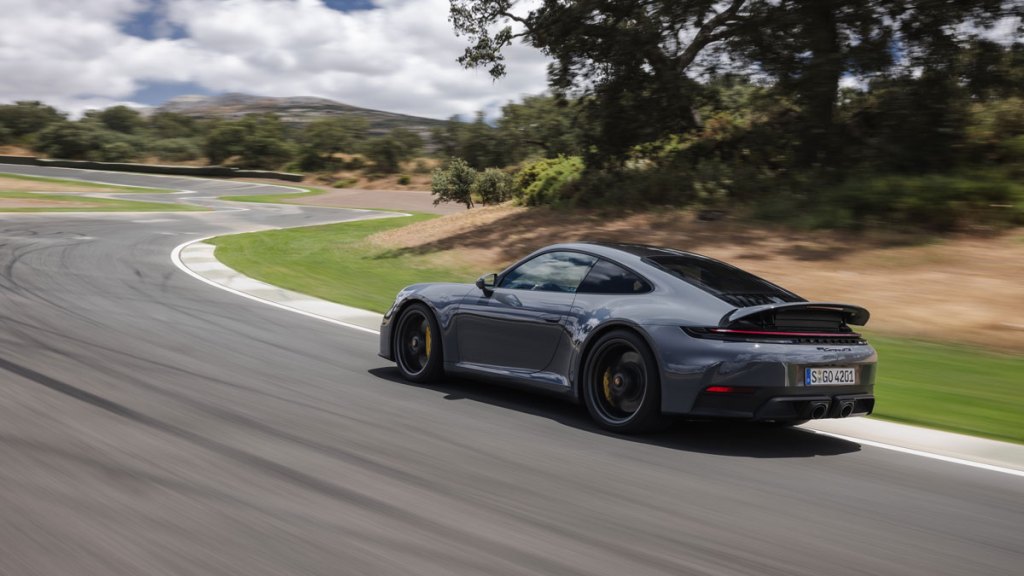
The 911 Carrera GTS Hybrid produces 532 hp, 150 hp more than the base Carrera model, which is powered solely by an internal combustion engine.
Porsche AG
Porsche claims the hybrid system’s weight savings are just 46 kg, but it’s worth noting that the weight of the 2025 911 models starts without the rear seat, which has become a no-cost option that adds 10 kg of extra mass. It may seem like a minor detail, but every gram counts when it comes to managing weight in a driver-focused sports car. That said, the GTS’s 1,690 kg curb weight includes standard equipment like rear-axle steering and an eight-speed PDK paddle shifter. (The GTS’s electric motor makes it impossible to pair a manual transmission with the hybrid drivetrain.)
Our first taste of the GTS was in a rear-wheel-drive Cabriolet version, which we drove on a mountainous road between Marbella and the Ascari Race Resort nestled in the Andalusian countryside of Spain. First impressions show several sacred cows have been sacrificed in the name of progress: Porsche’s familiar left-hand key, introduced for those hot starts at Le Mans, has been replaced by a start/stop button. We’re told the button activates new features, including remote start and parking. But the feature goes against our instinct not to mess with a formula that works. It’s also somewhat hidden behind the steering wheel, which doesn’t help the argument.
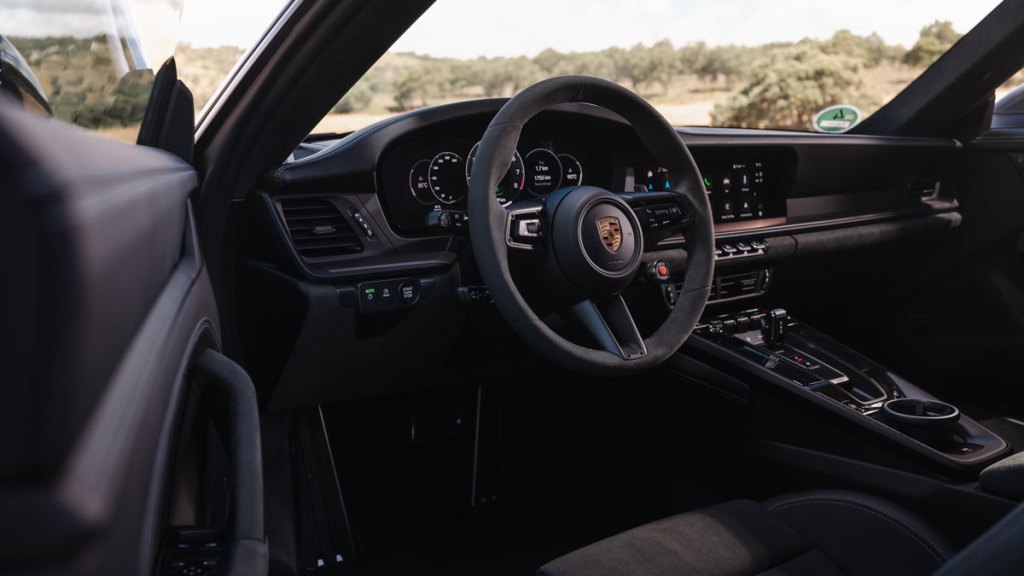
The interior of the Carrera GTS reflects the grand touring sensibility of the model variant.
Porsche AG
The other thing that makes purists crack is the disappearance of the central analog tachometer, replaced by a curved 12.6-inch display. Here again, we have an instinctive desire to keep the physical tachometer, if only because it’s one of the last bastions of analog instrumentation in an increasingly digital and therefore anonymous world of user interface design. For what it’s worth, the new setup works well – even better than before, thanks to the fact that the virtual gauges are no longer partially blocked by the driver’s hands. These functional improvements are thankfully acknowledged. But they also raise the question of whether buyers of high-end sports cars are looking for perfection or heritage, the latter of which is already a rare commodity and arguably doomed to extinction.
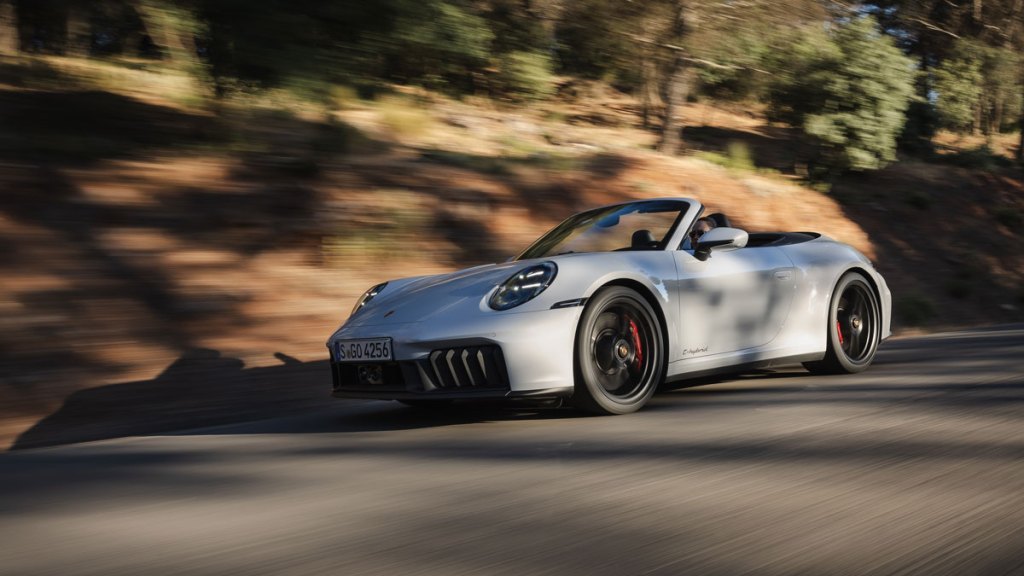
The Carrera GTS hybrid convertible.
Porsche AG
These philosophical questions are momentarily sidelined when the GTS is driven at full speed. Step on the accelerator and the duopoly of petrol and electric motivation creates obscene thrust, with audacious low-end torque and strong pull all the way to the 7,500-rpm redline in every gear. While the introduction of standard turbocharging in the 992.2 range in 2016 transformed the 911’s low-end power, hybridisation takes it to a new level. Zero-to-60 mph now takes 2.9 seconds in the coupe and 3.0 seconds in the cabriolet. The urgency is noticeable and the accompanying exhaust note is satisfying, especially when the GTS’s standard sports exhaust flap is set to open.
While the hybrid’s power is addictive and the speed is intoxicating, the driving experience varies considerably between the coupe, convertible, and Targa models. The open-top configuration is a beautiful way to enjoy the natural surroundings, with panoramic views of the sky and a multi-sensory experience adding an extra dimension to a drive like ours through the stunning Sierra de las Nieves National Park. But when you’re not basking in the wind in your hair and the sun on your skin, the mechanical sensations of an open-top GTS can feel muted compared to the coupe’s. The steering is good but not transcendent, the chassis capable but not disarmingly precise.
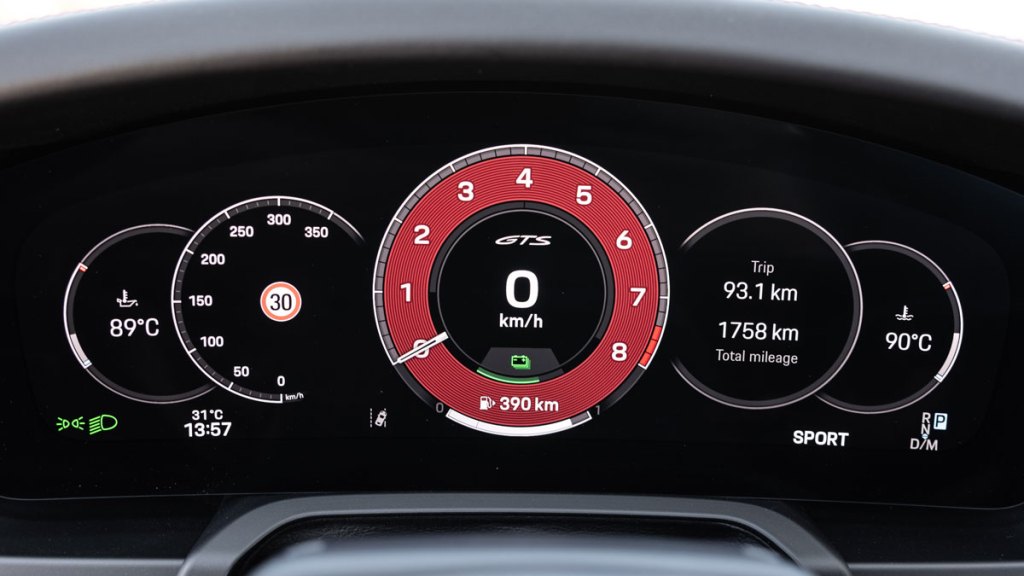
Analog gauges, like the tachometer, have been replaced by a 12.6-inch curved screen.
Porsche AG
These are points that may not strike the general public. However, those who are in contact with the greatest Porsche names of all time are likely to be dissatisfied with the fact that the driving experience of the GTS and Targa convertibles is simply not as magical as it could be. Perhaps it’s the weight: in its heaviest Targa 4 GTS configuration, equipped with PDCC (Porsche Dynamic Chassis Control), this 911 can weigh more than 1,760 kg. That’s more than 400 kg more than the lightest version available in 2024, the 911 S/T.
For comparison, the $300,000 911 S/T also revs faster while producing less horsepower. The S/T, however, refines the formula through extreme chassis tuning and a constant effort to create driver feedback, contributing to the widely held view that it is one of the best 911s of all time. The GTS is a radically different proposition, aimed at a much broader audience and a radically different mission.
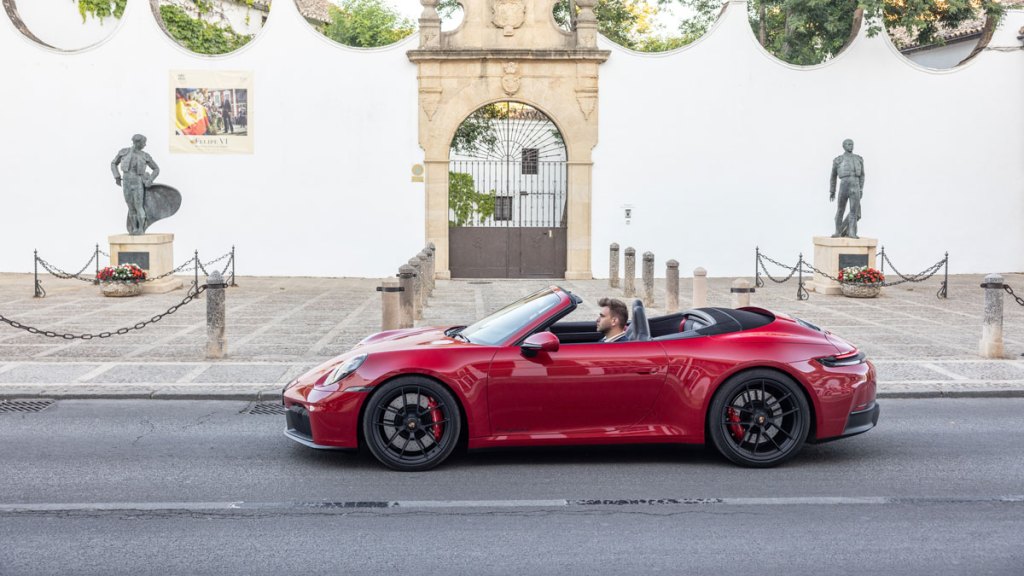
The Carrera 4 GTS Hybrid Cabriolet.
Porsche AG
Interestingly, the GTS coupe variants present a completely different personality on the 5.4km Ascari Circuit, a massive motorsport park that offers a varied combination of corners based on some of the world’s iconic racetrack features. Notably, the new GTS Hybrid outpaces the non-hybrid GTS model it replaces by 8.7 seconds on the Nürburgring’s Nordschleife track, putting its lap time on par with the previous-generation GT3. However, the new model handles its lap times in an entirely different way, offering improved grip (thanks to wider tyres) that helps manage its greater power over the track-focused model.
While the GT3 is more karting-focused with its precise steering and lightning-fast response, the new GTS uses more power and torque, a retuned suspension, and the optional PDCC system to match its pace. The optional carbon-ceramic brakes go a long way toward boosting confidence on the track, with 10-piston front calipers delivering blisteringly powerful deceleration. The feel is less visceral and doesn’t offer the same off-the-cuff driving sensation, but the result, at least if you’re tracking lap times, is nonetheless remarkable. For a new model positioned just above the base Carrera (for now), the GTS is a serious overachiever.
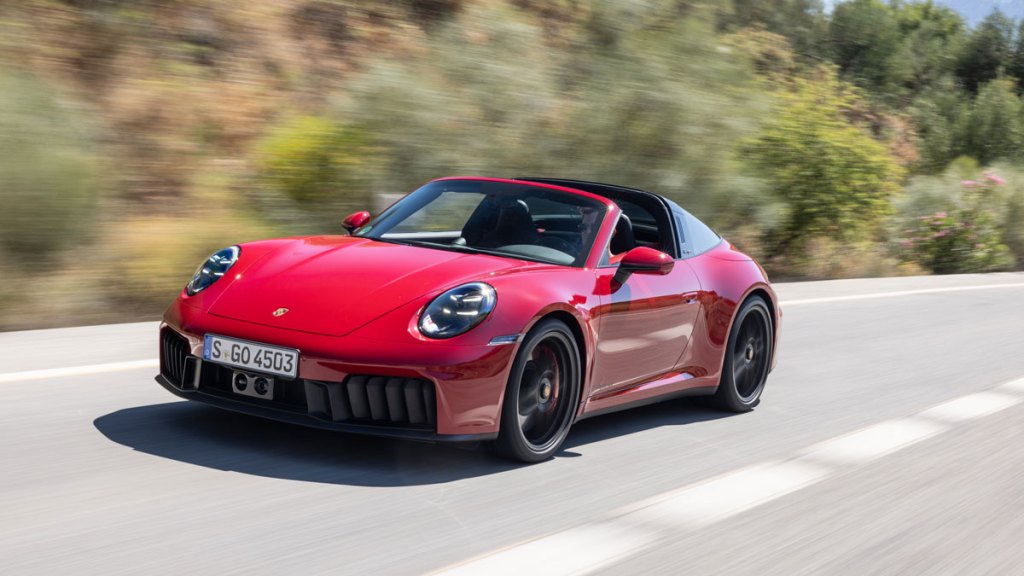
The 911 Targa 4 GTS hybrid.
Porsche AG
There will inevitably be a chorus of detractors who will criticize the GTS for sapping the soul of their venerable 911. And while that argument may be partially true, the departure from orthodoxy is only half the story, which brings us back to the broader scope of the 911 range. Yes, electrification is a foregone conclusion for Porsche’s most coveted model, and it was recently leaked that the Cayman and Boxster will actually only be available in pure electric guise from 2025. But until Porsche’s first sports car meets that fate, the GTS represents an impressive alternative to the conventional 911.
With its abundant power and long-distance comfort, the GTS may not be the track weapon every Porsche enthusiast is looking for, but we shouldn’t be surprised because it’s right in the name: Grand Turismo SportPorsche is talking about the combination of high performance and everyday usability. And yes, there will be more focused RS versions as well, likely offering crisp, naturally aspirated analog driving experiences to counter the GTS’s grand touring sensibilities. Porsche’s 911 story may have changed with the GTS Hybrid, but if the automaker’s history of satisfying its most ardent drivers is any indication, it’s a story that’s far from over.
Click here for more photos of Porsche’s 911 GTS hybrid.
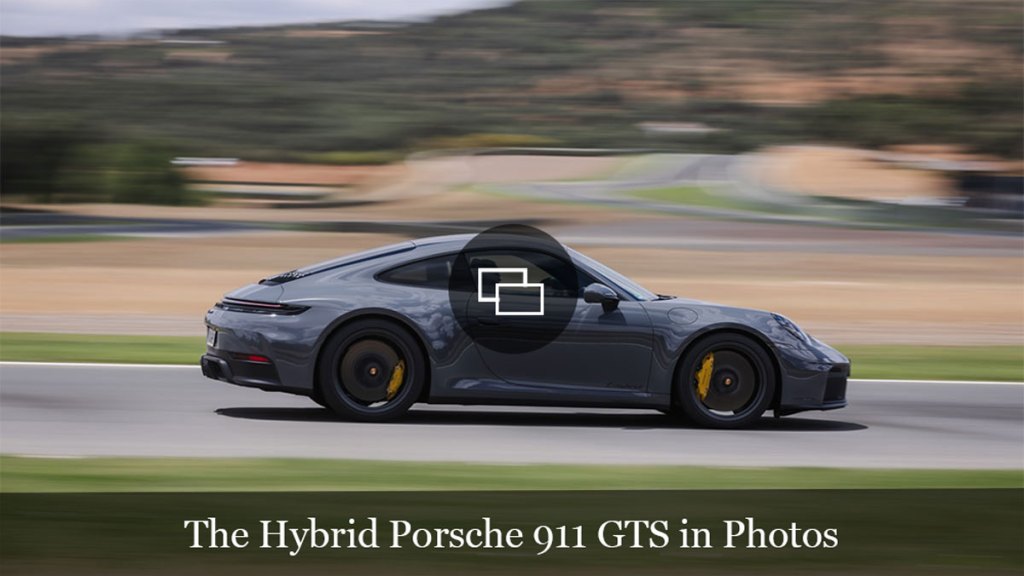
Driving the new Porsche 911 GTS hybrid.
Porsche AG
